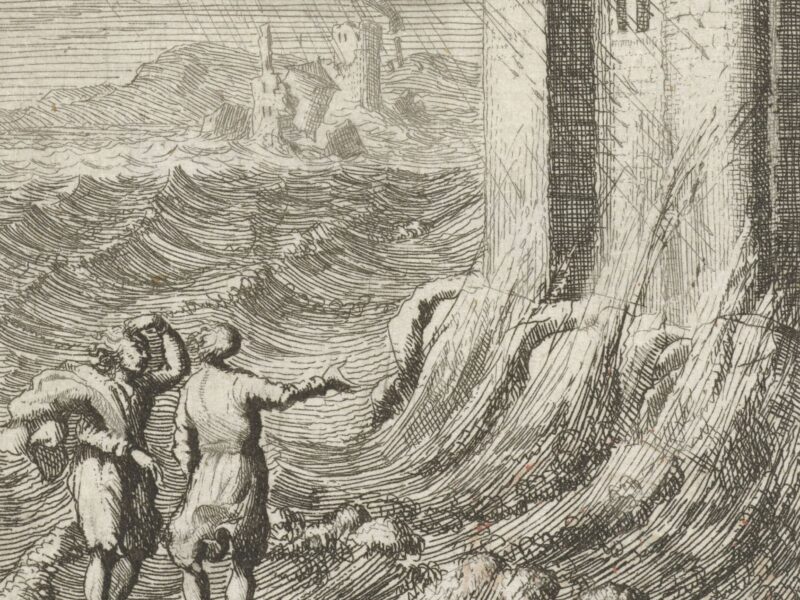
First Week of Advent – Tuesday
Readings: Isaiah 11:1-10; Ps 72; Luke 10:21-24
The Gospel tells us that Jesus hides the divine mysteries from the wise and learned, but reveals them to little children. This made me think of two stories. The first one is a piece of graffiti written on a wall in a theological faculty:
And Jesus said unto the disciples, “And who do you say that I am?”
They replied, “You are the eschatological manifestation of the ground of our being, the ontological foundation of the context of our very selfhood revealed.”
And Jesus replied, “What?”
There is, of course, nothing wrong in searching for meaning through an elaborate theology using philosophical language, as long as we don’t forget the very source of our beliefs. Our faith is not anchored in notions and ideas, but in the personal relationship between God and man. And this leads me to the second story, which focuses more on the childlike:
A couple of years ago, while I was studying in Lille in France, I signed up to lead the Children’s Liturgy during the Mass. It was the 23rd December, and the kids were very excited. They were sitting on the floor, and in the middle of the room there was a big object covered with black material wrapped with paper garlands. I talked to them about Jesus the great King who we were expecting, and since Jesus is King, he will probably come to us, well, if not wrapped in garlands, in, let us say, a festive way. So I asked the children: What do you think we will we find if we unwrap the big black present on the floor? I had the full attention of 20 children who couldn’t wait to see what was hiding so mysteriously. ‘Well’, I said, ‘Let’s see then…’
I started to lift off the material, with the children staring with big eyes, waiting for what that was about to come. In one big movement, I unveiled the object: Ta-da! But there was no

big surprise hiding behind. Instead, there was a smaller package of cardboard. Not so fancy, not so cool… So I continued: ‘Hm, let’s see here then: Ta-da…’ But no. Nothing! As I unwrapped layer after layer, and after many Ta-da’s, the children’s eyes stared more and more intensely. Where could the great King be?!!
The more I unwrapped, the smaller it got. Finally, I sat down and drew out a tiny little container, and shook it gently. By this moment, the children had fallen on their knees around me, and they had an expression on their faces, quite similar to some of the faces I see in front of me here now.
Finally, I opened the little capsule, and inside there was a tiny little figure of a man: Who might that be? A little girl raised her head and looked me straight in the eyes and said: ‘Joseph?’ Close! In a diplomatic manner, I agreed that he actually looked a little like Joseph, but in fact, I really think it is Jesus. And why is Jesus so small? So that he can enter into our hearts…
It might be that this story is first and foremost adapted for children. But it is really meant for all of us. Jesus makes himself small in order to enter into our lives. Now God calls us to be on the same level with him; not in his majesty or in his kingship, not in wisdom or elaborate thoughts; the Revelation doesn’t start there. No, it is revealed to the childlike, to those who accept him as he is.
If you have been able to follow the minds of these children, as they stared their way into the Mystery of the Incarnation in about 10 minutes, then you have opened up to your Christian calling, you have begun a meditation that started on the first Sunday of Advent and that will continue until we find the Son of Man in whom all dimensions of our lives culminate.
Today we remember the first anniversary of the death our brother, Austin, who was a very able and sophisticated theologian, but who also saw with the eyes of a child. Let us pray for the repose of his soul, that his mediation may go on for eternity, adoring the Christ Child, the Christ who is so small he can enter into every part of our being.


